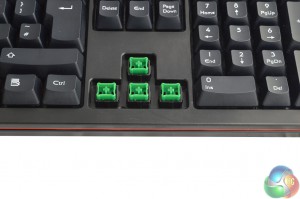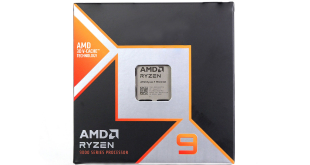We like to get as close to ‘real world testing' as we possibly can here at KitGuru, which is why the i-Rocks K10 has been my main keyboard of use for the last couple of weeks – putting it through every scenario that our regular readers may find useful. However, due to the subjective nature of peripheral reviews, we do recommend that you try before you buy, as long as you have the opportunity.
Now with that out of the way, how does the i-Rocks K10 perform with its specially designed POM switches?
Overall, the i-Rocks K10 is a nice keyboard, it's solidly built and has a slight upwards curve to the body, which made typing very comfortable. In addition, the keys are spaced out well- I was able to type up daily news here at KitGuru swiftly and accurately without feeling any discomfort over time.
I also found the key spacing to be spot on, during my time with the K10 I didn't find myself mashing the wrong keys due to poor or abnormal spacing- everything was exactly where it was supposed to be.
The POM switches included on the K10 are interesting. They are built to add an extra layer of tactile feedback compared to what you would find on a standard membrane keyboard and they certainly do their job.
Gaming and typing on the i-Rocks K10 is a much better experience compared to standard, cheap membrane keyboards. However, each key press still requires a significant amount of force to actuate compared to a mechanical keyboard and the keys do tend to feel a little mushy while typing.
This is very much a ‘no nonsense' product, there is no software suite included and there is a distinct lack of media keys, backlighting and macros.
However, we don't see this as a negative as the £20 price point puts the K10 in a strong position against competing products, such as the Corsair Raptor K40, which does come with some nice features but also comes in at double the price.
 KitGuru KitGuru.net – Tech News | Hardware News | Hardware Reviews | IOS | Mobile | Gaming | Graphics Cards
KitGuru KitGuru.net – Tech News | Hardware News | Hardware Reviews | IOS | Mobile | Gaming | Graphics Cards




Does the force required to make a key press be compared to MX Black switches?
How is this compared to my ageing MS SideWinder X6?